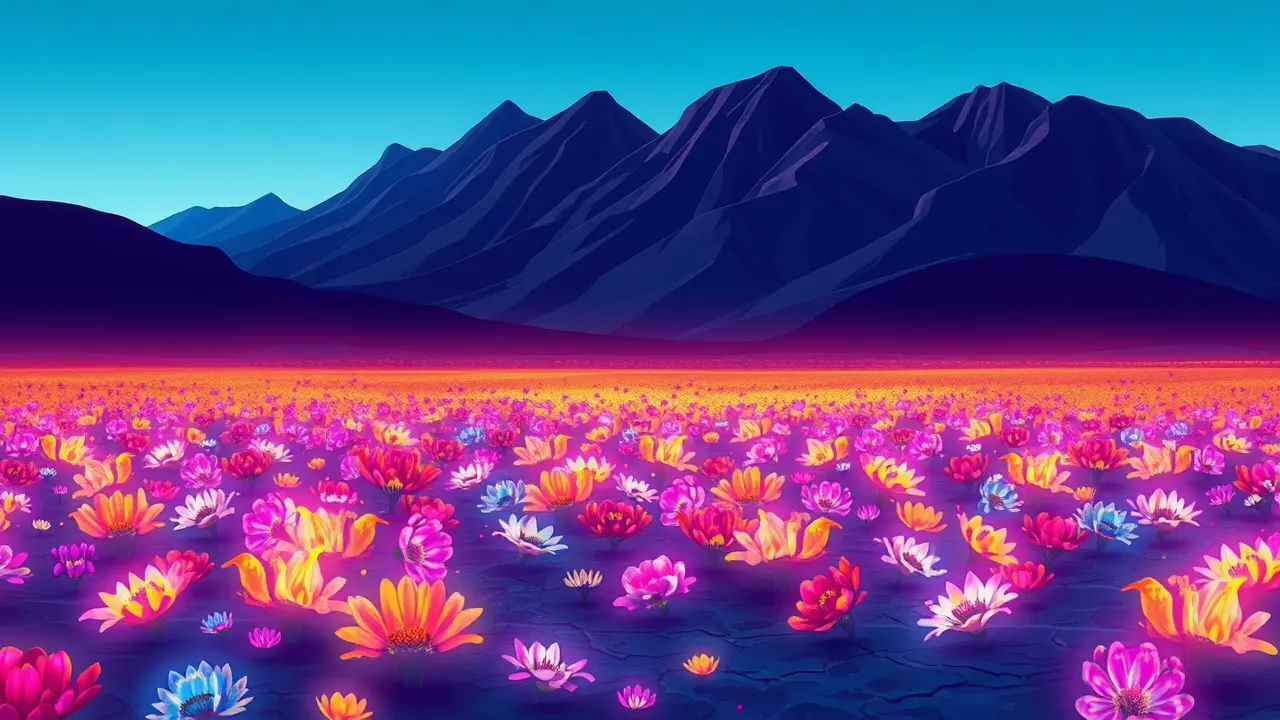Rare Wildflower Bloom Transforms Atacama Desert.
The Atacama Desert, a vast and ancient landscape so brutally arid that NASA uses it to simulate the conditions of Mars, has once again performed one of nature’s most profound magic tricks. In a breathtaking spectacle that occurs only after precise, infrequent rainfall, the desolate plains have erupted into a living, breathing sea of vibrant color—a phenomenon known locally as the ‘desierto florido,’ or flowering desert.This is not merely a pretty picture; it is a profound ecological resurrection. For years, sometimes decades, the seeds of over 200 species of endemic flowers, including the iconic ‘pata de guanaco’ and the deep blue ‘añañucas,’ lie in a state of suspended animation beneath the cracked, salt-crusted earth, enduring extreme temperature fluctuations and a near-total absence of water.They are waiting. The catalyst is a rare sequence of climatic events, typically winter rains in the arid region that are just sufficient to penetrate the hard soil and trigger germination without being so heavy as to wash the fragile seeds away.This recent bloom, therefore, is a direct and visceral testament to the intricate dance between climate patterns and biological tenacity. Scientists view these events as crucial barometers for the health of this unique ecosystem, but they also sound a note of caution.While the immediate cause is beneficial rain, the increasing frequency and intensity of such blooms are being closely studied as potential indicators of broader, more disruptive climate shifts, such as the warming of the Pacific Ocean altering traditional weather systems. The transformation is not just botanical; it is an entire ecosystem waking up.The sudden carpet of mallows and lilies becomes a bustling metropolis for pollinators—bees, butterflies, and hummingbirds arrive in droves, which in turn attract lizards, birds, and small mammals, creating a temporary but vibrant food web in the world’s driest non-polar desert. For the local communities, this is a time of both wonder and economic opportunity, as tourists flock to witness the miracle, yet it also raises pressing questions about conservation and the impact of human footfall on such a delicate, ephemeral event. The bloom is a powerful reminder of life’s relentless resilience, a silent, beautiful rebellion against the harshest of conditions, showing that even in the most barren places, the potential for explosive, colorful life is merely sleeping, waiting for its moment to defy the odds and paint the earth anew.
It’s quiet here...Start the conversation by leaving the first comment.
© 2025 Outpoll Service LTD. All rights reserved.
